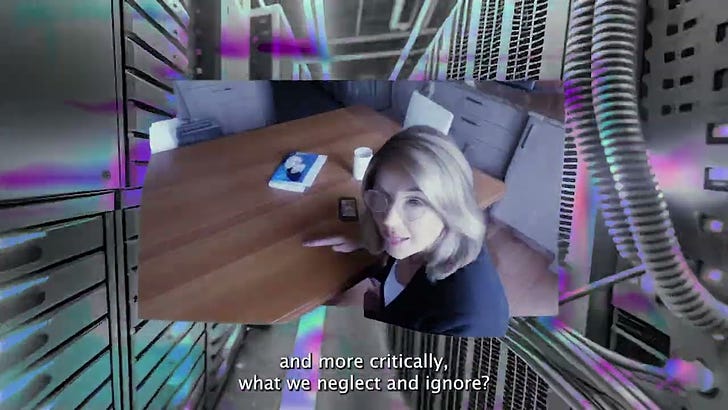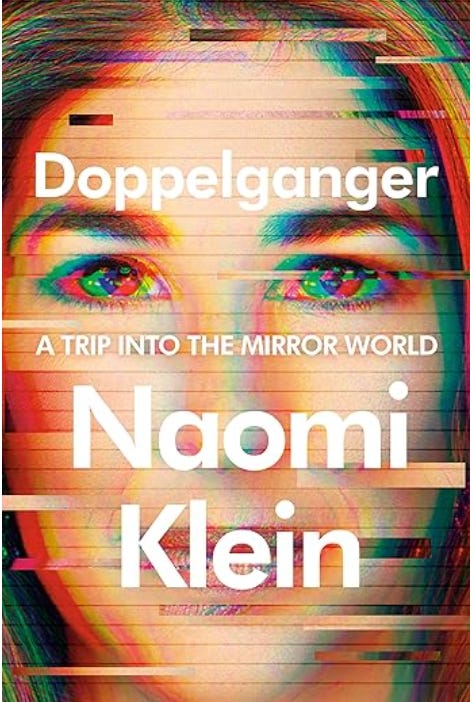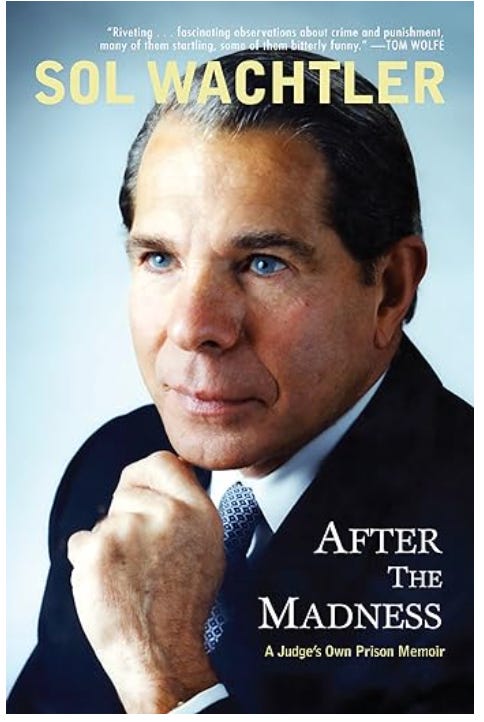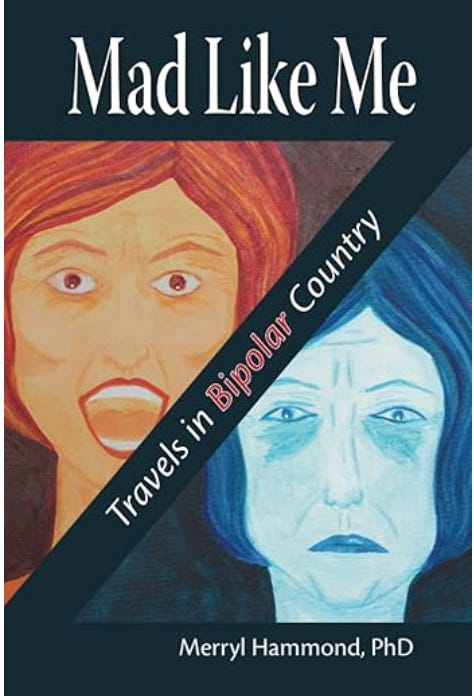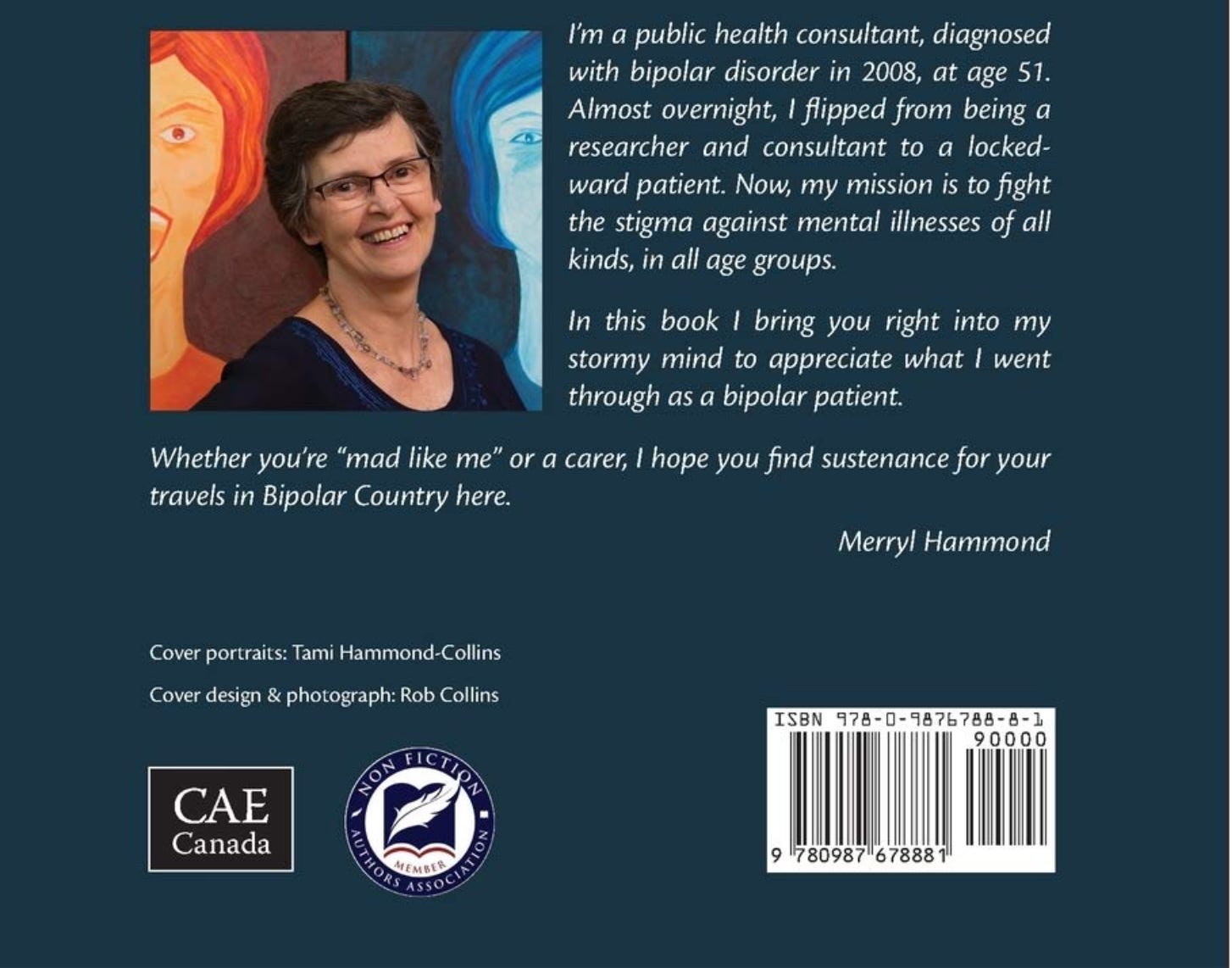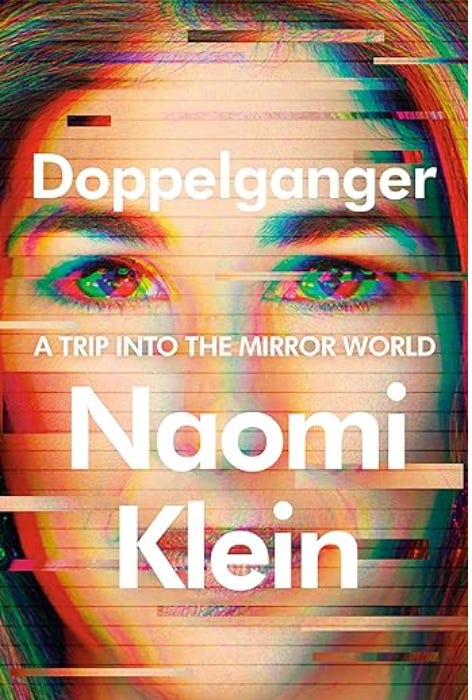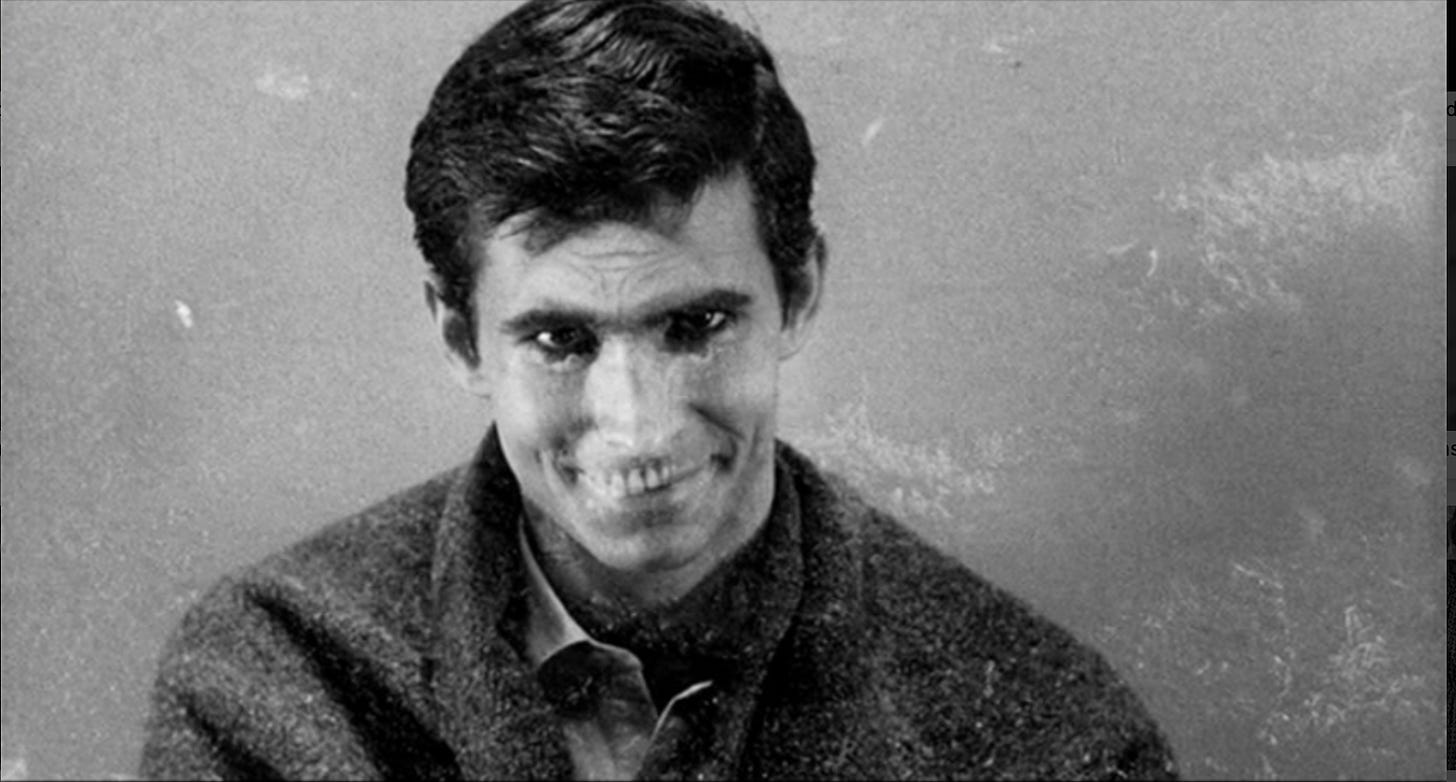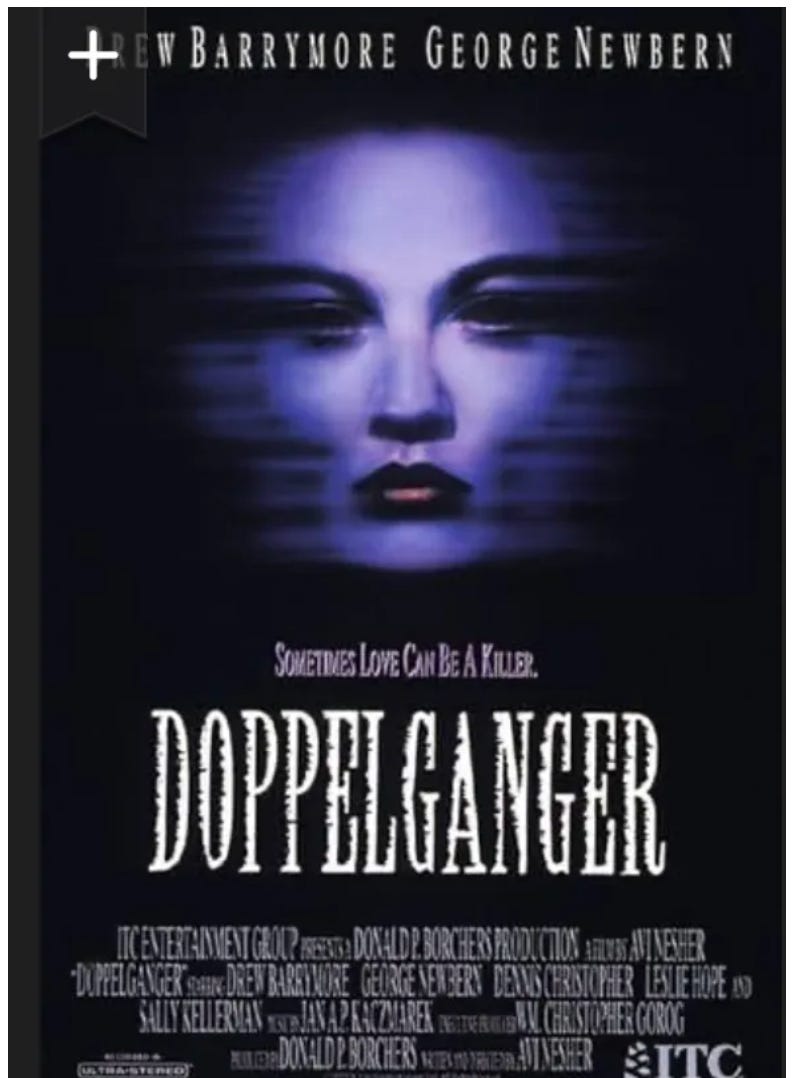A tale of two Naomis tells us that the truth will either set you free or drive you crazy
Only at a moment of mass madness could a screed like Naomi Klein's "Doppelganger," wildly vilifying Naomi Wolf, even find a publisher, much less get positive reviews
Naomi Wolf recently posted a plea for funds to help support her invaluable work—i.e., Outspoken, her Substack, and DailyClout, “a nonpartisan news site devoted to information about democracy and freedom.” It was through DailyClout that Naomi organized, then publicized, her jaw-dropping analysis of the Pfizer Papers, her shocking look into the impact of “vaccination” on women’s reproductive systems, and other life-or-death concerns:
I’m delighted by that recent pitch, not just because it helps me help Naomi Wolf to do her stellar work, but—more selfishly—because it’s a perfect hook for my continuation of this piece, which I started some nine months ago, but had to put aside: an essay dealing less with (this) Naomi’s powerful contributions than with a very weird attack on her by Naomi Klein.
This post was inspired last fall by Toby Rogers’ cogent Substack on Doppelganger: A Trip into the Mirror World—Klein’s incoherent, venomous attack on Wolf, whom Klein sees (this is no joke) as an evil version of herself.
Months later, Naomi Wolf herself (reluctantly) weighed in with her own more detailed psychoanalysis (about which more below):
Toby and the “bad” Naomi do so good a job exposing, and explaining, the individual pathology at work in this bizarrely hateful book that I don’t feel it needs much more from me than some germane observations—first, to bolster Toby’s point that this book indicates not only that Naomi Klein herself has gone astray, but—far worse—that the madness pulsing through it is not hers alone.
That the book was published by Farrar, Straus & Giroux (FSG), owned by the mighty Holtzbrinck Publishing Group (and, once upon a time, the publisher of such acute and various observers of the world as Edmund Wilson, Flannery O’Connor, Alberto Moravia, Nadine Gordimer, Elias Canetti, Aleksandr Solzhenitsyn, Wole Soyinka and Bernard Malamud), and that it’s been rapturously blurbed or fulsomely reviewed by Michelle Goldberg (in—where else?—the New York Times), Katie Roiphe, Bill McKibben, Angela Y. Davis, Judith Butler, Laura Kipnis, Cory Doctorow, Molly Crabapple, Andrew O’Hehir and “V” (the yoni-formerly-known-as-Eve Ensler), among many others, tells us that Klein’s lunatic hostility to those who won’t comply, and don’t agree—an evil mass personified by (Klein’s projection of) “Naomi Wolf”—is now pandemic on “the left,” and (therefore) all throughout “our free press” and the academic-industrial complex.
Thus I agree whole-heartedly with Toby’s view that Doppelganger gives us “a very detailed look inside the mind of a Covidian.” And yet I feel compelled to add that this mass virulence, while common on “the left,” is not peculiar to “the left,” and/or the class to which “the left” belongs, but is now far more widespread—indeed, pandemic, as I’ll explain below.
As for the book itself, to get a sense of its irrationality you should read Toby’s piece, and/or watch this video:
If, on the other hand, you’d rather skip the book (and/or video), as well as Toby’s piece, you could just take a close look at the former’s cover—since, in this case, you can judge the book from it:
Is it just me, or is this cover not a little strange, considering that Doppelganger is supposed to be a rational critique, and therein roughly comparable to (say) Klein’s Shock Doctrine, or No Logo? Or is it the book that’s strange, so that this cover is, in fact, appropriate? In any case, I can’t remember ever seeing a book by any “celebrated activist and public intellectual” (to quote FSG’s puffery), a book purporting to discuss some clear and present danger, whose cover casts the author as deranged. While FSG calls the book a “comic memoir” rich with “chilling reportage and cobweb-clearing analysis,” suggesting that its author is in full control of her material (and herself), its cover seems to show us someone in the grip of madness.
Thus that claustrophobic photo—a choker shot, in cinematic parlance—is notably unlike most authors’ photos, which tend to radiate a certain calm of mind, whether cheery or contemplative or resolute. We can see this clearly by comparing the Canadian Naomi’s jarring image with the authors’ photos on other books that tell of having gone insane. This author, in other words, is not someone who took “a trip into the mirror world,” and then came back, and wrote about it from a saner place, as in these examples:
Compare these pictures of Judge Wachtler (looking soberly into the light, his ordeal now behind him) and of Dr. Hammond (now happily beyond the mad extremes of her bipolar years) with the “Naomi Klein” depicted by her publisher (no doubt with her approval). This recent traveler into madness evidently isn’t looking back at her traumatic “trip,” as she’s apparently still on it. Gazing blankly back at us through a distortive grid of flashing horizontal lines, as if quarantined behind an electronic barrier (as she and others on the “left” believe that “anti-vaxxers” ought to be), she’s not (yet?) back among the rest of us, where she might gain some perspective on what (she thinks) happened. That she has no perspective on her sojourn (whatever that was) is apparent from the composition of this cover, as her grim face fills the frame to bursting, so that the only thing we see is this “Naomi Klein” still tripping in “the mirror world”—her torment rendered chillingly by what appears to be another face imposed on hers, or both uncannily dissolving into one another; so that this “public intellectual” appears as one possessed by some infernal version of herself, an evil spirit that won’t let her be, the “good” Naomi and the “bad” together staring back at us through luminescent multicolored eyes.
That image would seem less appropriate to any “comic memoir” laced with “cobweb-clearing analysis” than to a certain kind—the very scariest—of horror movie (or TV show). (Could that cover have appealed to many readers?)
That unsettling image of two faces merged into one nightmarish gaze reminded me of the penultimate shot in Psycho, wherein there suddenly appears, on Norman Bates’ boyish face, the rictus of his long-since-murdered mother:
And here’s a more recent horror movie (1993), which the “bad” Naomi sees as the possible model for Doppelganger’s cover:
While it may not be a very winning way to sell the book (although, with the “left” having gone berserk, it may), the cover is quite brilliant as a rendering of Klein’s “argument” and point-of-view; for—whatever FSG prefers to call it—Doppelganger is indeed a horror story, by a “celebrated activist and public intellectual” who sees herself, and her whole world, as (somehow) deeply threatened with (somehow) obliteration by another “celebrated activist and public intellectual,” who’s also named Naomi, and with whom she’s often (understandably) confused by readers who don’t know their work: Doppelganger is a furious protest of that confusion, since, in Klein’s view, and FSG’s, that bad Naomi is the Anti-Klein—i.e., a towering demoness as wrong as Klein is (in her own view) right, and who vents “conspiracy theories”—some call it “disinformation”—as deliberately as Klein (believes she) re-affirms the truth. Thus Doppelganger is, in fact, no “comic memoir” fraught with “chilling reportage and cobweb-clearing analysis,” but one long shriek of projective hate, itself as dangerous as it keeps saying its target is.
To grasp the psychic mechanism driving Klein’s attack—and how she struggles to pretend that she’s not furiously driven by it, but coolly analyzing it—one can do no better than read Toby’s and the “bad” Naomi’s posts with care. Here I’m simply noting how malign that mechanism is, as evidenced not just throughout the book but also right there on its cover. As Klein tells it, she spent these last three years closely following her Doppelganger’s twisted effort to deny the Truth about “the virus,” all the necessary “COVID measures” and (especially) those life-saving “vaccines”—an effort that has often had her sharing her “misinformation” with (are you sitting down?) Steve Bannon (now in prison, where all such non-compliant types belong, as far as Klein et al. are concerned). Thus Klein would have us see her as dispassionately studying Naomi Wolf; whereas, in fact, Klein has been passionately stalking her, as Toby bluntly notes, in wondering at Klein’s odd silence ever since “the virus” started taking over
I wish I was joking. It fills me with sadness to even type those words. But it’s true. By her own admission Ms. Klein ignored her aging parents; did not campaign much for her husband who ran for a seat in the Canadian parliament (he lost); and stopped working on any aspect of corporate power, climate change, or disaster capitalism — so that she could listen to Dr. Wolf’s appearances on Steve Bannon’s Covid War Room and track Dr. Wolf’s every move across alternative media.
It is, indeed, a stalker that confronts us on the cover of that book—as would be very clear if Klein were not a woman, but a man who’s spent the last three years obsessing on a certain woman, casting her as a key exemplar, and promoter, of perverse untruthfulness, and looking for some way to break her lethal spell, lest she (somehow) shatter his identity, and triumph over all the rest of us. (And how exactly do we break that spell? Don’t ask.)
That cover aside, what makes Doppelganger such a scary read is, in part, Klein’s zealous unconcern with showing, through argument and evidence, how and/or why Wolf’s claims are false. As far as Klein’s concerned, that falseness is a given, self-evident to any rational person. That’s a scary lapse, considering how lucid and meticulous an analyst Klein used to be (within strict limits), and how deeply, and uncritically, she has absorbed the mere authoritarian say-so of the media, so that she now indignantly regurgitates it as the truth, reflexively defending it from the wrongthink of that other, bad Naomi and her droogs on the “far right.”

